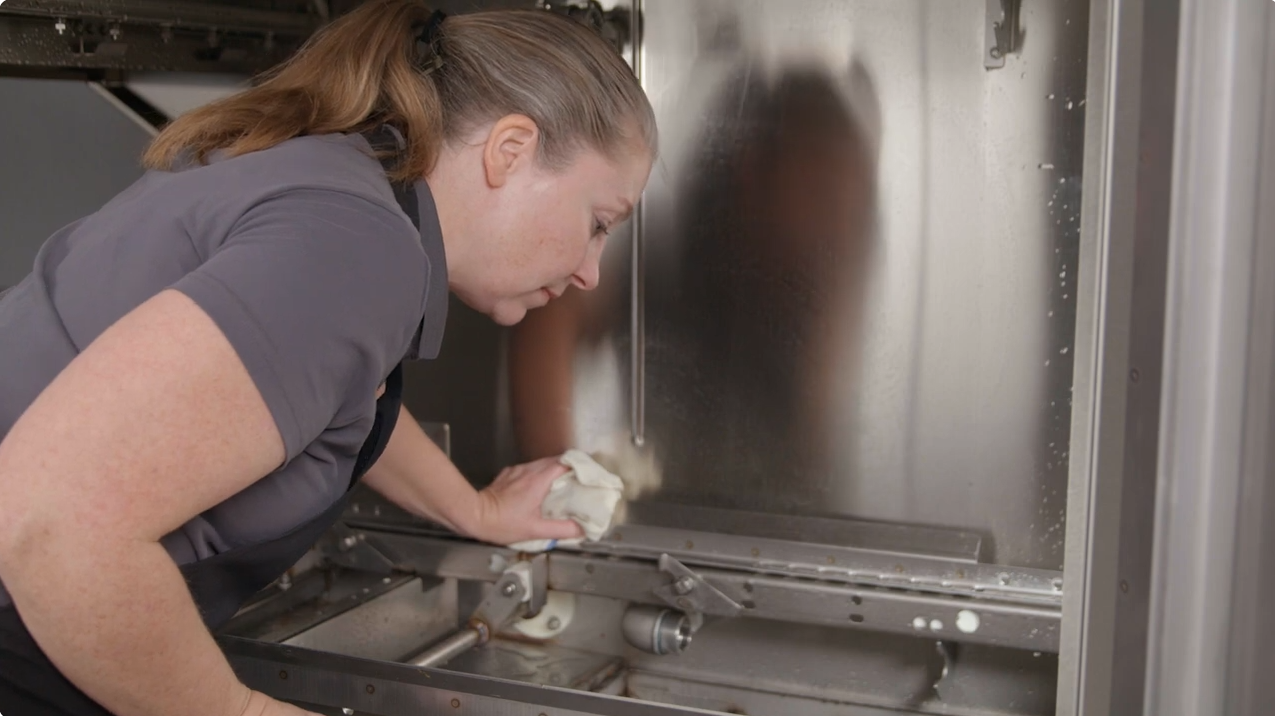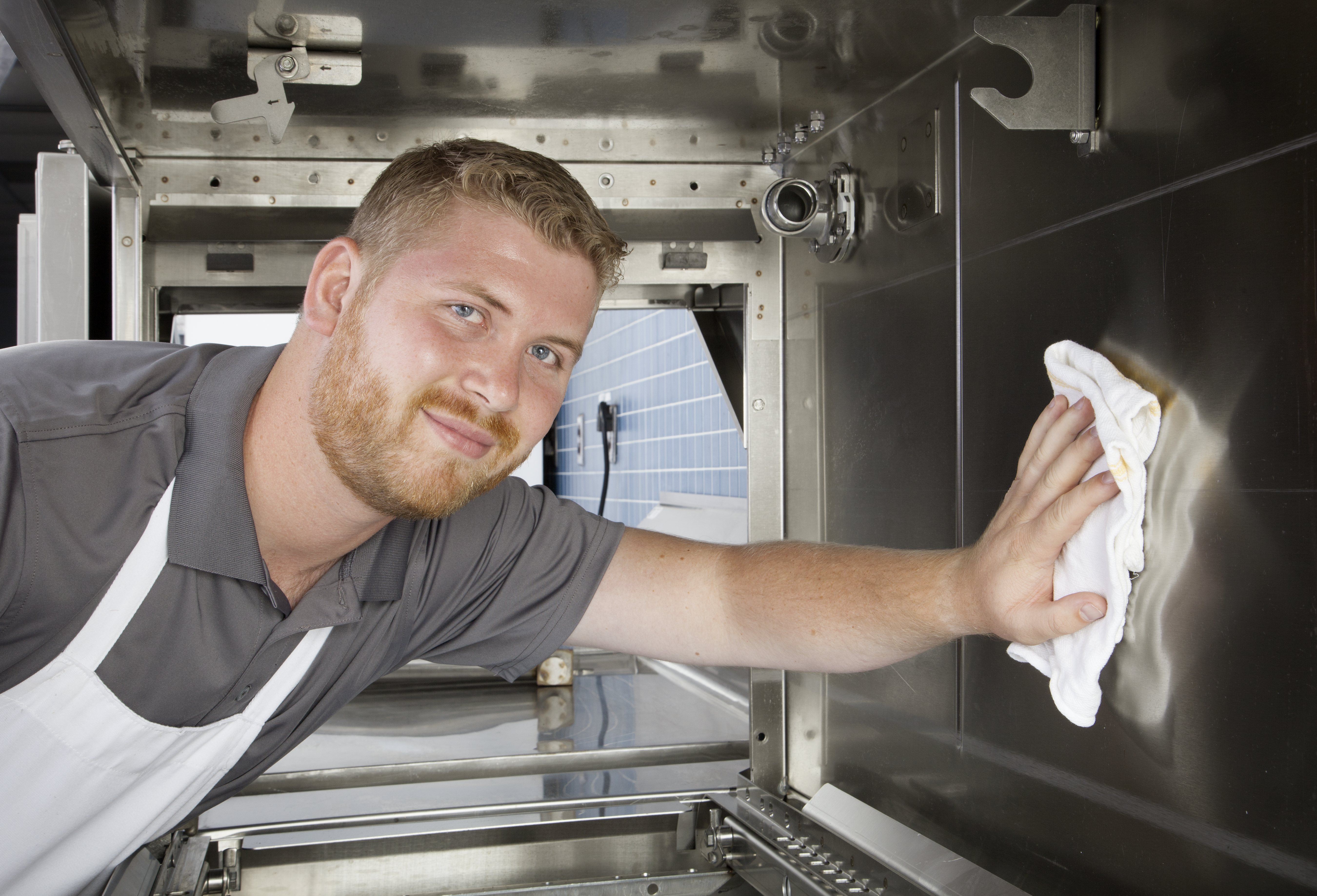At the end of a long day, probably the last thing anyone in a foodservice operation wants to do is to clean the dishmachine. It takes time — right at the point when people want to go home. And dealing with a dirty dishmachine is not always the most pleasant task. It’s one of those jobs that it would be really easy to put off until tomorrow…or next week. But an improperly cleaned dishmachine can have adverse effects on both front- and back-of-house operations.
Back-of-house, poor cleaning can affect the dishmachine’s wash system and reduce performance, requiring rewashing of dishes that aren’t cleaned properly. And it could be a major problem if any of those dirty dishes made it out to the customer. So while no one might love the dishmachine cleaning process, developing a regular cleaning process can make everyone’s job easier. Let’s look at the “hows” and “whys” of cleaning your dishmachine.
Staffing Up
The most critical step in regular dishmachine cleaning is getting the staff on board with regular cleaning procedures. First, check the operator’s manual to find out what type of cleaning needs to be done, and how frequently it needs to be performed. Then, take time to train staff on training procedures. To reinforce the message, visual aids such as wall charts and videos can be helpful, especially for those employees who might have trouble reading. Wall charts should be posted near the machine to reinforce the daily start-up and cleaning procedures. QR codes on the wall charts and machine often link to training videos, helping staff get operational help quickly.
Also, it’s important that staff are trained in accordance with all HACCP and ServSafe guidelines. Ensure they’re following proper handwashing techniques and remind them to stay home if they’re not feeling well.
Doing It Right
Once you’ve established who’s going to be doing the cleaning, the next step is to set up basic practices for machine cleaning and maintenance. Tasks can be separated into those that need to be done after every meal service, those that should be done at the end of the day, and those that need to be performed at weekly or monthly intervals.
- Strainer pans and scrap baskets should be removed, emptied and cleaned after each meal service.
- The wash water should be emptied and the wash tank should be flushed out at least once per day, or more frequently if you’re washing a high volume of ware.
- The wash and rinse arms should be flushed and cleaned in warm, soapy water at least once weekly.
- High-touch nonfood contact surfaces, such as handles, knobs and the control panel, should be regularly cleaned and disinfected to help reduce cross-contamination.
- The machine should also be delimed as needed and when indicated by the machine.
What exactly is deliming? Lime scale is simply the deposit of calcium and other materials that is left behind when hard water evaporates. As hard water runs through a dishwasher, heat causes minerals to precipitate out of the water and create a crusty build-up in pipes, in the pump, inside the walls, and on wash and rinse arms. Lime scale build-up can affect a dishwasher’s performance if not cleaned regularly.
Technology Makes It Easy
Although cleaning the dishmachine may never be a job that anyone truly loves, technological advances on today’s dishmachines are making it a lot less “hateable.” Take the deliming process, for example. While some dishmachines may have a function that alerts the operator when to delime the machine, Hobart’s Advansys™ line of commercial dishwashers include a truly automatic deliming function. It notifies the operator when it’s time to delime, and then dispenses the right amount of delimer, circulates the solution throughout the machine, including the booster, drains it, and flushes the machine…automatically.
Other Hobart dishmachine models offer a wide variety of features that make cleaning easier, such as an Auto Clean feature, self-cleaning wash arm nozzles, and capless wash arms found on the FT1000e and the new CL Rack Conveyor. These helpful cleaning technologies, backed by Hobart’s unmatched cleaning performance and renowned machine life, make it the smart choice in dishmachines.




.png)


%20proc%20%20(1).jpg)


